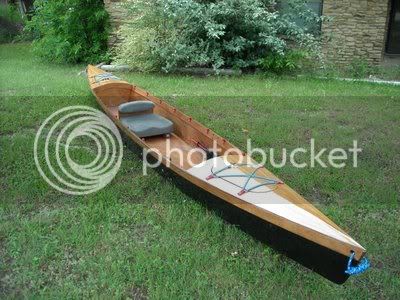I asked this questions befor, but it keeps getting lost or overlooked in the rocker discussion. viewtopic.php?f=10&t=7811
It has beem stated on here that boats with a round bottoms are more efficient (faster) than less rounded profiled ones.
Question #1 Two pirogues with identical dimensions except one has sides flared to 15 degrees and the other one's sides are flared to 30 degrees, which one will be faster (more efficient)?
Question #2 If the 15 degree sided pirogue's floor (bottom) was widened so it would float at the same depth as the one with 30 deg. flared sides, would they paddle the same?
I know neither are actually rounded. Any differences may actually be because of the different shaped footprints, but the question is still valid.
beekeeper
It has beem stated on here that boats with a round bottoms are more efficient (faster) than less rounded profiled ones.
Question #1 Two pirogues with identical dimensions except one has sides flared to 15 degrees and the other one's sides are flared to 30 degrees, which one will be faster (more efficient)?
Question #2 If the 15 degree sided pirogue's floor (bottom) was widened so it would float at the same depth as the one with 30 deg. flared sides, would they paddle the same?
I know neither are actually rounded. Any differences may actually be because of the different shaped footprints, but the question is still valid.
beekeeper


